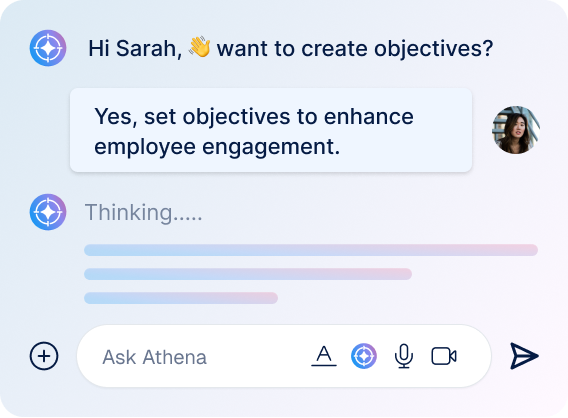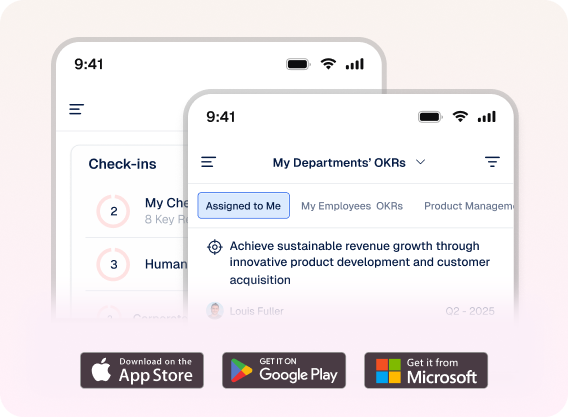Imagine an organization where every employee, from the newest intern to the seasoned CEO, wakes up daily knowing exactly how their work contributes to the company’s success. That magic happens when you align performance management with business goals. It’s not just about ticking boxes; it’s about optimizing the full potential of your organization.
Understanding Performance Management
Performance management includes activities to improve employee performance, including setting expectations, monitoring progress, providing feedback, and evaluating outcomes. It is a continuous process that helps organizations achieve their goals by optimizing employee performance and fostering a culture of accountability and growth.
Identifying Business Goals
The first step in aligning performance management with business goals is to clearly define those goals. Business goals should be specific, measurable, achievable, relevant, and time-bound. They can be short-term, such as quarterly sales targets, or long-term, like expanding into new markets. Clearly defined goals provide a roadmap for employees and ensure that their efforts contribute to the overall success of the organization.
Why Alignment of Performance management with Business Goals is Important
Performance management and business goal alignment are indispensable for an organization to achieve key business goals because they create a focused and motivated workforce that drives results.
Here’s how
1. Clarity and Direction
Alignment clarifies the “why” behind everyday tasks. When employees understand how their work contributes to the bigger picture (the business goals), they feel a sense of purpose and direction. This leads to a more engaged and motivated workforce.
2. Focused Efforts
Alignment ensures everyone is working towards the same objectives. Performance goals are cascaded down from company-wide goals to individual and team goals. This ensures everyone’s efforts are strategically aligned and contribute directly to achieving key business goals.
3. Continuous Improvement
Alignment promotes ongoing feedback and development. Regular performance reviews provide opportunities to identify gaps between current performance and desired outcomes. This allows for adjustments in strategies, training, and skill development to continuously improve performance and move closer to business goals.
4. Accountability and Ownership
Alignment fosters a culture of accountability. When employees understand their specific goals and how they contribute to the business goals, they feel a sense of ownership for their work. This leads to higher levels of accountability and responsibility for achieving results.
5. Measuring Success
Alignment allows for clear measurement of progress. Performance metrics tied to business goals enable organizations to track their progress and identify areas for improvement. This data-driven approach ensures efforts are continuously adjusted to optimize performance and maximize the likelihood of achieving key business goals.
Here is an example. A company wants to increase online sales by 20% in a year. Without alignment, employees might focus on random tasks, leading to scattered efforts. However, with alignment, the marketing team has specific goals (e.g., website traffic increase) that directly contribute to the overall sales goal. Through performance management, individual progress is tracked, feedback is provided, and strategies are adjusted to ensure the marketing team stays on track to achieve its goals, ultimately contributing to the key business goal of increased sales.

Here’s a Detailed Guide on How to Effectively Align Performance Management With Business Goals.
Aligning performance management with business goals is essential for ensuring that all organizational efforts contribute directly to achieving strategic objectives. This alignment fosters a unified direction, maximizes efficiency, and enhances overall performance.
Define Clear Organizational Goals
Organizational goals should be clear, measurable, and aligned with the overall business strategy. These goals can be related to revenue growth, market expansion, product development, customer satisfaction, or other key strategic areas. For example, a technology startup’s business goal is to become a leader in the AI software market. Their business strategy therefore includes expanding their product line, increasing market share, and enhancing customer satisfaction. Clearly defined goals like the above ensure that all performance management efforts are directed toward achieving the desired business outcomes.
Set Individual Performance Goals
Individual performance goals should be derived from departmental objectives. Use the SMART criteria (Specific, Measurable, Achievable, Relevant, Time-bound) to set clear and actionable goals for each employee. For instance, in an educational institute, teachers are given SMART goals such as increasing student pass rates by 10% and incorporating innovative teaching methods in their curriculum. These goals are specific, measurable, achievable, relevant, and time-bound, directly contributing to the institution’s success. These goals should directly contribute to the achievement of departmental and organizational objectives.
To learn more about achieving continuous learning for your organization
Integrate Performance Metrics with Strategic Planning
Performance metrics should be closely integrated with the strategic planning process. This means identifying key performance indicators (KPIs) that reflect progress towards strategic goals. For example, an energy company integrates performance metrics into its strategic planning by tracking KPIs like the number of new solar installations per quarter and customer satisfaction ratings. Regularly monitoring these KPIs helps track performance and make data-driven decisions to expand the market share of the company.
Foster a Culture of Accountability
A culture of accountability is crucial for aligning performance management with business strategy. Encourage employees to take ownership of their goals and performance. Regular check-ins, performance reviews, and constructive feedback help maintain focus and accountability. For example, doctors and staff at a clinic are held accountable for meeting patient care standards and operational efficiency, aligning their day-to-day activities with the clinic’s strategic objectives of providing high-quality healthcare.
Leverage Technology For Efficiency
Utilize performance management software and tools to streamline the alignment process. These tools can help set goals, track progress, provide feedback, and generate performance reports. Companies use performance management software to align employee performance with business strategy. The software tracks sales targets, customer feedback, and individual performance metrics, making it easier to identify areas for improvement and ensure that every employee is contributing to the company’s growth objectives. Technology enhances transparency and ensures that performance data is easily accessible for analysis and decision-making.
Encourage Continuous Learning and Development
Invest in continuous learning and development programs that align with the business strategy. Tailored training programs help employees acquire the skills and knowledge needed to achieve their performance goals and contribute to strategic objectives. For instance, employees in the cybersecurity department of a company are encouraged to complete advanced security certifications to support the company’s goal of becoming a leader in secure financial transactions. Development opportunities also enhance employee engagement and retention.
Monitor and Adjust Performance Management Practices
Regularly monitor the effectiveness of performance management practices and make necessary adjustments. Use performance data to identify areas for improvement and refine strategies accordingly. This iterative process ensures that performance management remains aligned with evolving business strategies
“All winning teams are goal-oriented. Teams like these win consistently because everyone connected with them concentrates on specific objectives. They go about their business with blinders on; nothing will distract them from achieving their aims”
Encourage Open Communication
Open communication between leadership and employees is vital for alignment. Ensure that employees understand the business strategy and how their roles contribute to it. Regular town hall meetings and strategic updates ensure that all employees understand the company’s goals of expanding into new markets and enhancing customer experience. Regularly communicating strategic priorities, progress, and any changes keeps everyone informed and aligned.
Recognize and Reward Achievements
Recognize and reward employees who achieve their performance goals and contribute to strategic objectives. Recognition programs and incentives motivate employees to maintain high performance and align their efforts with the company’s strategic direction. For example, some companies recognize employees who contribute to strategic goals with awards and bonuses. Wellness coaches who achieve high client retention rates are rewarded, reinforcing the company’s strategic objective of providing excellent customer service.
Conclusion
Aligning performance management with business strategy is a dynamic and ongoing process. By understanding the business strategy, setting clear goals, fostering accountability, leveraging technology, and encouraging continuous development, organizations can ensure that their performance management practices drive strategic success. This alignment not only enhances individual and organizational performance but also ensures sustained growth and competitive advantage.
Ready to align your team performance with your business goals today?
Related Articles
-
The Ultimate Guide to Dynamic Performance Management, 2026
Table of Contents What is Dynamic Performance Management? The Four Performance Management Archetypes Why Organizations Are Shifting to Dynamic PM... Read more
-
How to Implement Dynamic Performance Management in Tech Companies
TL;DR Dynamic Performance Management helps tech companies move beyond slow, yearly reviews. It uses real-work evidence from tools like GitHub,... Read more
-
The Manager’s Guide to Dynamic Performance Conversations
TL;DR It's time for traditional annual reviews to go away. Dynamic performance conversations take the place of yearly reviews with... Read more
-
How to Course-Correct Performance Using the Performance Triangle
Every organization experiences deviations. Targets shift, priorities change, and results don't always align with the effort invested. Such variation reveals... Read more




